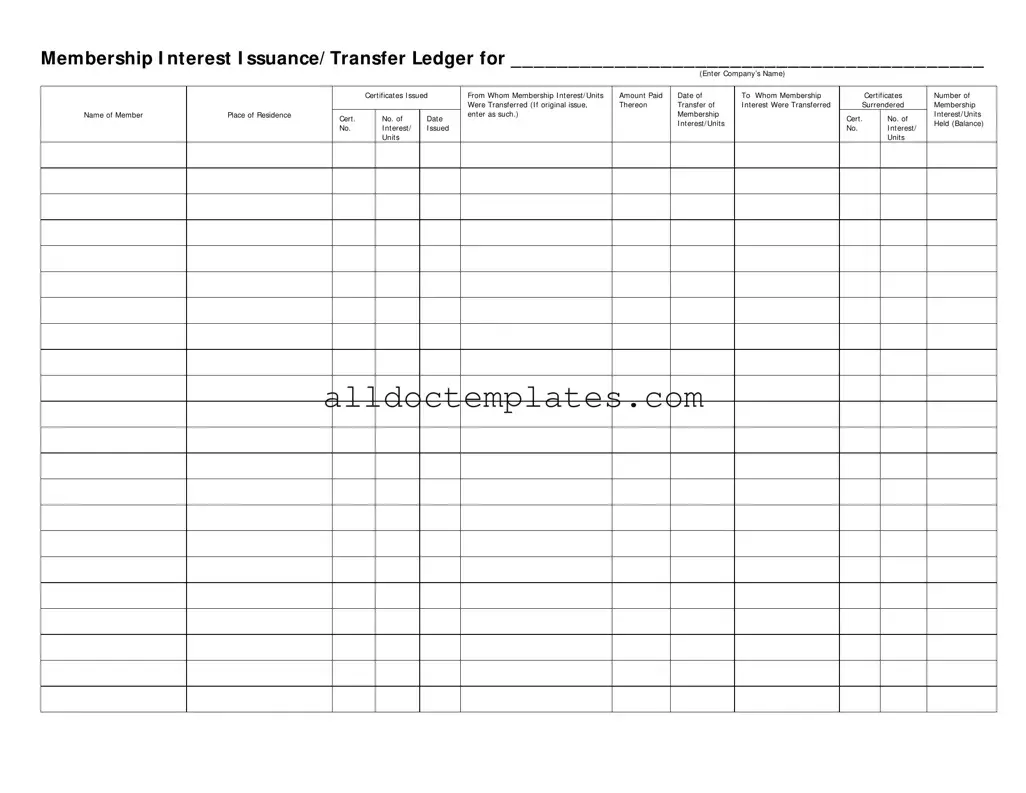Fill in a Valid Membership Ledger Form
The Membership Ledger form is a crucial document used to track the issuance and transfer of membership interests in a company. It records essential details such as the company’s name, the certificates issued, the amounts paid, and the dates of transfers. This form ensures transparency and accuracy in managing membership interests and helps maintain an organized record for all members involved.
Get Your Form Now

